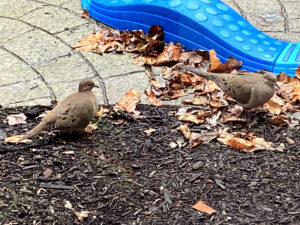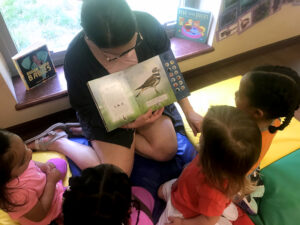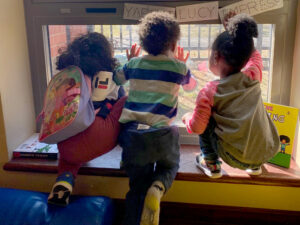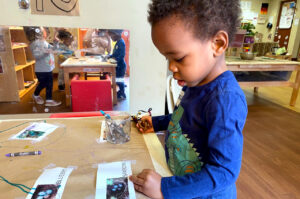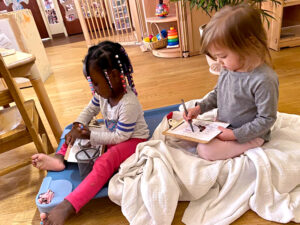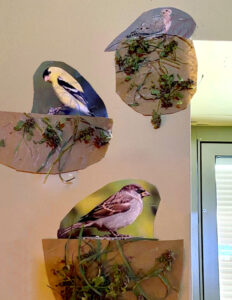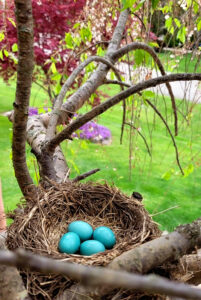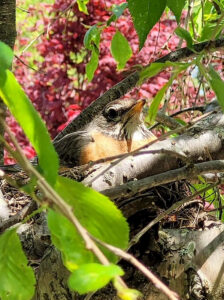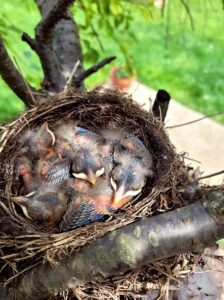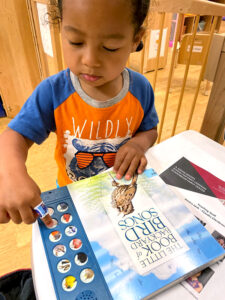
This project began when another classroom filled a sensory table with birdseed outside in the early spring. The children spilled the seed on the ground inadvertently inviting a pair of mourning doves to nest in the school’s courtyard space. The children showed great excitement and began to talk about and notice birds more often.
When the children saw the birds, the teachers began asking open-ended questions, such as “What do you know about birds?” or “What do you think the birds are doing?” to probe the children’s thinking and increase discussion. Teachers worked with children to add bird feeders along the fence behind the classroom in order to observe the birds from the back windows. One rainy day, the children noticed the doves very close to the window. A classmate who is a native Spanish speaker exclaimed, “Oh no! No manos!” Shortly thereafter, at lunch, the older toddlers had a dialogue about birds going back and forth saying, “Birdies don’t have a mouth; they have a nose!” or “No, no, no! Birdies don’t have a nose!” This discussion led the classroom curriculum to label parts of a bird, such as nape, wing, beak, etc., extending the children’s vocabulary and knowledge of birds.
The teachers and children then began studying nests by placing one on the science shelf and creating their own by gluing grasses and leaves to paper, then cutting it into the shape of nest. Luckily for the classroom, a mother robin built a nest in one of the trees at a teacher’s home, and she was able to bring in photos of the eggs, the mother bird on her nest, and finally baby birds! The children watched videos of birds hatching from eggs and learned to categorize different types of eggs and feathers by shape, size, and color. As the classroom continues this project, they are currently studying the sounds birds make by reading books that play different bird songs when you press a button. The children have successfully identified different types of birds like robin, cardinal, and upon hearing a “caw caw” one child said, “That’s a crow.” On a separate occasion while playing outside, the children mimicked the sound of a mourning dove actually getting it to call back and forth with them. Teachers are continuing to extend the bird project and build the children’s natural science knowledge as long as their interests allow.
Many of Ohio’s Early Learning Development Standards have been met while engaging in this project. Some of those standards are below:
- Approaches Toward Learning
- Experiment in the environment with purpose
- Asks questions to gain information
- Uses previous learning to inform new experiences with people and objects in their environment
- Use materials in new and unconventional ways
- Cognition and General Knowledge
- Link past and present activities
- Demonstrate awareness that objects can be compared by attributes, and begin to use words such as bigger, smaller and longer
- Identify self and others as belonging to one or more groups by observable characteristics
- Engage in focused observations of objects and events in the environment
- Asks questions about objects and events in the environment
- Language and Literacy
- Demonstrate interest in and use words that are new or unfamiliar in conversation and play
- Combine words to express more complex ideas, or requests
- With modeling and support, describe experiences with people, places and things
- Distinguish between sounds that are the same and different
- Recognize familiar sounds
Click on an image to enlarge.
